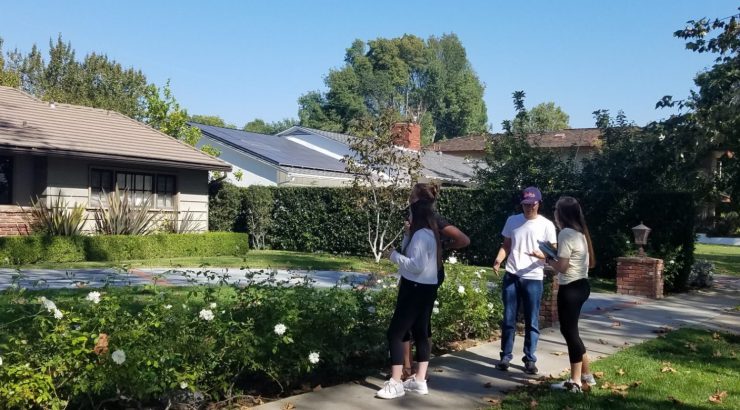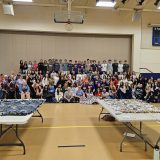Chapman Ecology Students Study How Socioeconomic Factors Influence Biodiversity and Ecological Processes in Santa Ana Jennifer Funk, Ph.D.
January 7, 2019
What comes to mind if I ask you to picture the word nature? Most of you will conjure an image of an uninhabited forest, a pristine national park, or a remote beach. Very few of you will consider the tree or garden right outside your window. Urban areas, which account for 3 to 5 percent of our planet’s land area, harbor a large number of plant and animal species and contribute to key ecological processes such as carbon cycling, pollution remediation, and temperature regulation.
Socioeconomic factors like income, education, and occupation vary widely among different urban neighborhoods and may have huge impacts on local ecology. This past fall, students in Chapman’s upper-division Ecology course set out to better understand how socioeconomic factors influence ecological processes. Students surveyed a 1.8 mile stretch of road in Santa Ana which spans a large range in home value ($400,000 to $1 million). They found higher diversity and cover of plants in the higher socioeconomic neighborhoods. These areas also had lower noise pollution. In contrast to their expectations, bird diversity was not affected by home value.
The students concluded that residents in the higher socioeconomic neighborhoods are likely benefiting from higher plant cover, as trees can lead to lower house temperatures in the summer. Higher bird and plant diversity increase aesthetic values and may also support more wildlife. Our results agree with those from urban ecology studies in other areas of the country. However, to our knowledge, this is the first study of its kind in Orange County.
Class activities such as this one foster critical thinking and analytic skills in our students. Students were asked to generate their own hypotheses prior to starting data collection. They then conducted statistical analyses of their data and communicated their results to the class. These hands-on experiences are better preparing our students to become the next generation of scientists.


